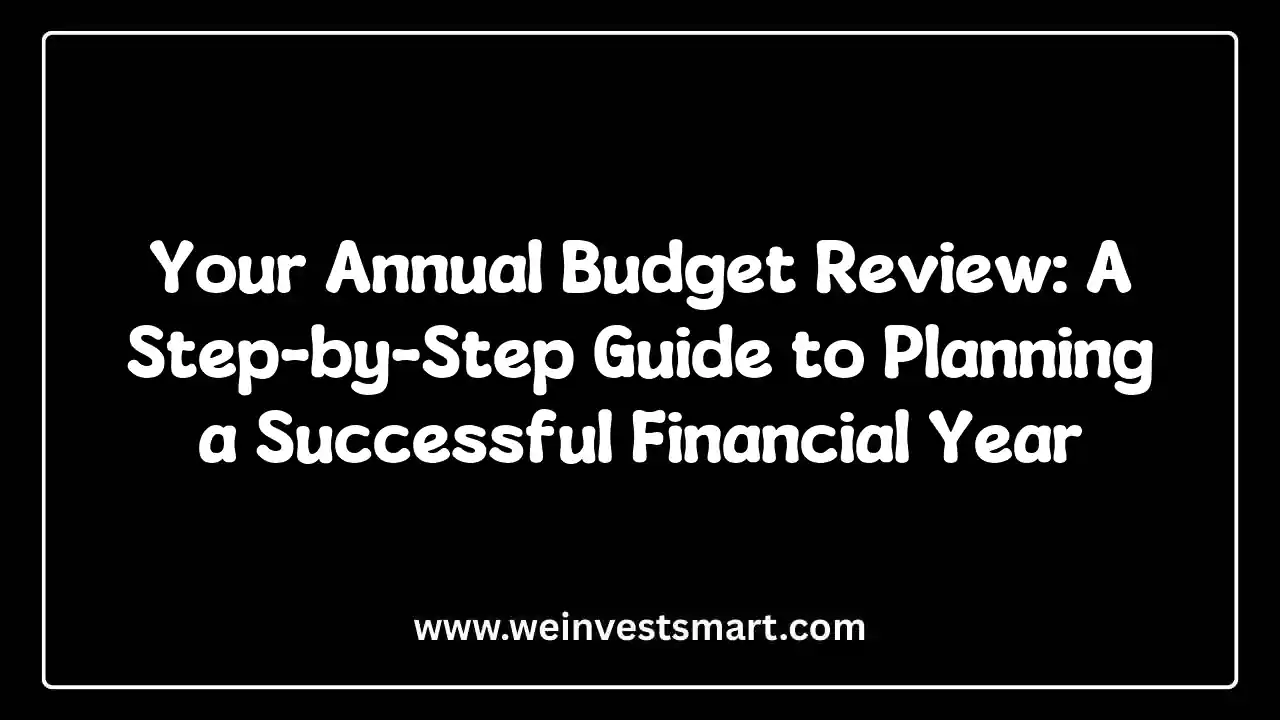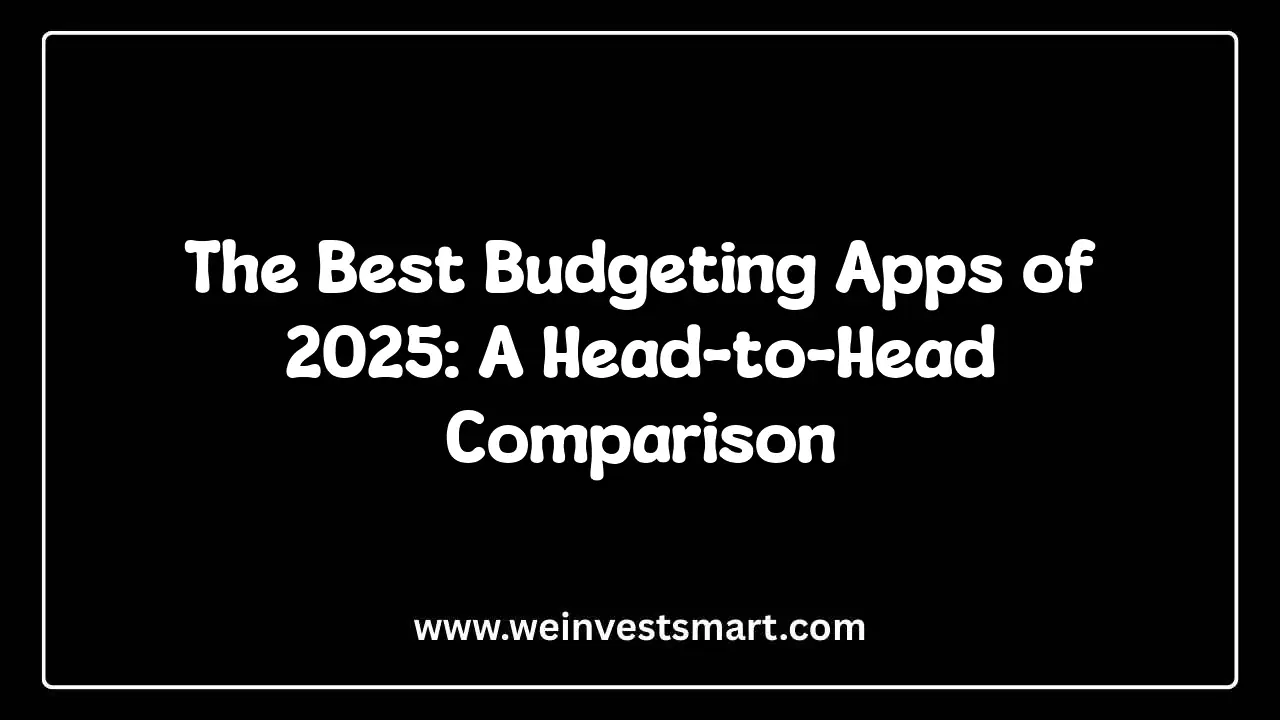· WeInvestSmart Team · budgeting · 10 min read
How to Create a Budget That Works With an Irregular or Variable Income
For freelancers, gig workers, and salespeople, traditional budgeting is a recipe for failure. Learn the powerful strategy of budgeting based on your lowest-earning month and using a dedicated "buffer fund" to finally smooth out the financial roller coaster.
Most budgeting advice is a cruel joke for anyone who doesn’t get a predictable, bi-weekly paycheck. We’re talking about you, the freelancer, the gig worker, the commission-based salesperson. You’re told to “make a budget,” but how can you plan where your money will go when you have no idea how much is coming in? The standard advice—budgeting based on your average income—is not just unhelpful; it’s a dangerous trap that sets you up for a vicious cycle of feast and famine.
Going straight to the point, living on a variable income without the right system is like riding a financial roller coaster in the dark. The high-income months feel incredible, leading to a surge in spending. But then the lean months hit, and panic sets in, forcing you to rack up credit card debt just to stay afloat. The funny thing is, we blame ourselves for a lack of discipline when the real culprit is a budgeting method that was never designed for our reality.
But what if we told you there’s a way to get off the roller coaster for good? What if you could create the stability of a salaried employee, even when your income is wildly unpredictable? Here’s where things get interesting. The solution is to flip conventional wisdom on its head: stop budgeting for the income you hope to make and start budgeting for the income you know you can survive on. And this is just a very long way of saying that by embracing your worst-case scenario, you can build a financial fortress.
The Flawed Logic of Averages (And Why It’s Sabotaging You)
To understand the solution, we first need to dissect the problem. Why is budgeting on your average income such a bad idea? Let’s say over the last six months, you earned $3,000, $8,000, $4,000, $7,000, $2,500, and $5,500. Your average monthly income is a respectable $5,000. So, you build a budget based on earning $5,000 a month. But in this six-month period, you only hit or exceeded that average half the time. In the other three months, you fell short, creating a deficit that you likely covered with debt or stressful last-minute scrambling.
This approach creates a permanent state of financial anxiety. You’re constantly playing catch-up, using the surplus from a good month to pay off the debt from a bad one, never actually getting ahead. It’s a reactive, chaotic way to manage your money that leaves no room for long-term goals. This sounds like a trade-off between optimism and reality, but it’s actually a recipe for perpetual stress. You’re building your financial house on shaky ground, and it’s bound to collapse.
You may also be interested in: How to Conduct a “No-Spend Challenge”: The Ultimate Financial Reset
The Baseline Budget: Building on Solid Ground
The real secret to stability is to create a budget based not on your average income, but on your lowest-earning month. Going straight to the point, you need to look back at the last 6-12 months of income and find the absolute lowest amount you brought in. Let’s use our previous example: your lowest income was $2,500. This is your new salary. This number, and this number alone, is what you will use to build your monthly budget.
This might feel terrifying at first. How can you possibly live on your worst month’s income? That’s the entire point. This exercise forces you to confront the absolute truth of your finances. It requires you to create a “bare-bones” budget that covers only your absolute necessities.
Step 1: Identify Your Core Necessities. List out every expense you must pay to survive. This is not the time for wants; this is about the essentials.
- Housing: Rent/Mortgage
- Utilities: Electricity, water, internet
- Food: A realistic grocery budget (not restaurants)
- Transportation: Gas for your car or public transit fare to get to work
- Insurance: Health, car, and renters/homeowners insurance
- Minimum Debt Payments: The absolute minimum you must pay on any loans or credit cards to avoid default.
Step 2: Compare Your Necessities to Your Baseline Income. Add up the total cost of your core necessities. Let’s say it comes to $2,200. Now compare this to your lowest monthly income of $2,500. In this scenario, you have a surplus of $300. This means that even in your absolute worst month, you can cover your essential needs. This knowledge is the foundation of financial peace of mind. If your essential expenses are higher than your lowest income, you have an immediate red flag that your baseline lifestyle is unsustainable, and you need to make bigger changes.
You may also be interested in: How to Create a “Values-Based” Budget and Spend Guilt-Free
The Buffer Fund: Your Personal Payroll Department
You’ve built your budget on your lowest income. But what happens in a month where you only earn $2,500? And what do you do in a month where you earn $8,000? This is where the second, and most crucial, part of the system comes in: the buffer fund.
Think of the buffer fund as a separate savings account that acts as your personal payroll department. Its sole job is to smooth out your income. Here’s how it works:
- Open a Separate Savings Account: This is non-negotiable. This account must be separate from your regular checking account and your emergency fund. Label it “Buffer Fund” or “Income Stability Fund.”
- Fund it During High Months: In any month where your income is higher than your baseline budget ($2,500 in our example), the entire surplus gets transferred directly into your buffer fund. So, in the month you earn $8,000, you pay yourself your $2,500 “salary” and immediately transfer the remaining $5,500 into the buffer.
- Pay Yourself During Low Months: In a month where you earn less than your baseline, you draw from the buffer fund to make up the difference. If you only earn $2,000, you will transfer $500 from the buffer to your checking account, ensuring you still have your full $2,500 salary to work with.
You get the gist: this system allows you to pay yourself a consistent, predictable salary every single month, regardless of your actual earnings. The buffer fund absorbs the shocks of your variable income, transforming the feast-or-famine cycle into a steady, manageable flow.
How Big Should Your Buffer Fund Be?
This is a critical question. While a traditional emergency fund should have 3-6 months of living expenses, your buffer fund has a different purpose. A good starting goal is to have one to three months of your baseline expenses saved in the buffer. In our example, with baseline expenses of $2,200, a solid buffer would be between $2,200 and $6,600. For those with extremely volatile incomes or in seasonal industries, aiming for a six-month buffer provides an even greater sense of security.
You may also be interested in: The Best Budgeting Apps of 2025: A Head-to-Head Comparison
The Surplus Plan: What to Do When You’re Overflowing
So, what do we do once the buffer fund is full? And here is where things get interesting. A full buffer fund is a major milestone. It means you’ve successfully weatherproofed your finances against income volatility. Now, any additional income you earn above your baseline can be deployed with purpose, following a predetermined plan. This is often called a “waterfall” or “cascading priorities” approach.
Once your buffer is full, any monthly surplus should flow down to the next set of priorities:
- Build Your Emergency Fund: If you don’t already have one, now is the time to aggressively fund a separate emergency fund with 3-6 months of essential living expenses. This is for true emergencies, like a medical crisis or major car repair, and should not be confused with your buffer fund.
- Attack High-Interest Debt: Use the surplus to make extra payments on credit cards, personal loans, or any other debt with a high interest rate.
- Save for Taxes: As a freelancer or gig worker, no one is withholding taxes for you. A smart rule of thumb is to set aside 25-30% of every single payment you receive into a separate “Tax Savings” account. Your surplus months are the perfect time to ensure this account is adequately funded.
- Invest for Retirement: Open a SEP IRA or Solo 401(k) and start using your surplus to make significant contributions toward your long-term future.
- Save for “Wants” and Irregular Expenses: This is where you can start funding your sinking funds for things like vacations, a new computer, or holiday gifts.
You may also be interested in: Your Annual Budget Review: A Step-by-Step Guide to Planning a Successful Financial Year
The Bottom Line: From Chaos to Control
Creating a budget with a variable income isn’t about complex spreadsheets or restrictive rules. It’s about building a system that insulates you from chaos. By budgeting on your lowest month’s income, you create a foundation of stability. By using a buffer fund, you become your own payroll department, ensuring a consistent and predictable cash flow. This method transforms money management from a source of constant stress into a source of empowerment.
Remember, this system is a tool, not a prison. The numbers will change. You might need to adjust your baseline income once a year as your business grows. But the principles remain the same. And this is just a very long way of saying that you no longer have to be a passenger on your financial journey. You can be the one in the driver’s seat, confidently navigating the ups and downs with a clear map and a full tank of gas.
This article is for educational purposes only and should not be considered personalized financial advice. Consider consulting with a financial advisor for guidance specific to your situation.
Irregular Income Budgeting FAQ
How do you budget with an income that changes every month?
The most effective way to budget with a variable income is to stop using averages and instead base your budget on your lowest-earning month from the past year. This creates a realistic baseline for your essential expenses. All income earned above this baseline is then strategically allocated to a buffer fund, savings, and debt repayment.
What is the lowest-earning month budgeting method?
This method involves looking at your income over the last 6-12 months and identifying the single month you earned the least. You then build your entire monthly budget as if that lowest amount is your consistent salary. This ensures you can always cover your core necessities, even in a slow month.
What is a buffer fund and how does it work?
A buffer fund (or slush fund) is a separate savings account used to smooth out income fluctuations. In high-earning months, you transfer all income above your baseline budget into this fund. In low-earning months, when your income falls short of your baseline, you draw from the buffer fund to cover the difference, effectively giving yourself a stable paycheck.
How much should I have in my buffer fund?
A good starting goal is to build a buffer fund that can cover one to three months’ worth of your essential expenses. For those with highly volatile incomes, a larger buffer of six months provides even greater security and peace of mind.
How should I handle high-income months?
In months where you earn significantly more than your baseline, you should have a pre-determined plan. After covering your monthly budget, the surplus should be used to aggressively fill your buffer fund first. Once the buffer is full, you can allocate the extra income toward high-interest debt, retirement savings, taxes, and other long-term financial goals.



